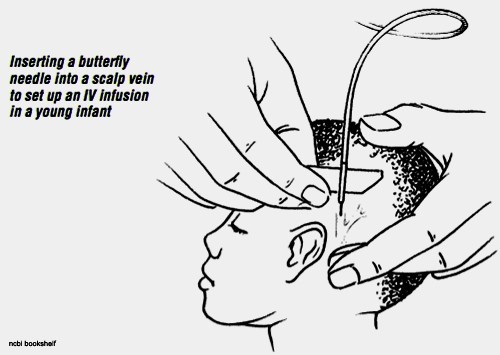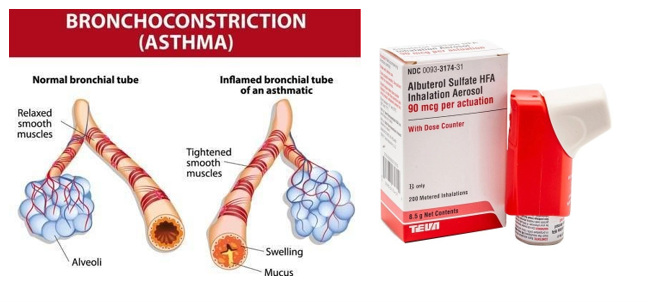When starting a peripheral intravenous (IV) infusion on an infant, which intervention should the nurse implement?
Select a site that is least restrictive to the infant.
Assess dorsal surface of feet for an IV site.
Instruct parents to sing or croon to the infant.
Apply soft restraints to all four extremities.
The Correct Answer is A
Peripheral intravenous (IV) infusion is a common procedure performed on infants in a hospital setting. The selection of the IV site is critical to ensure proper placement and to prevent complications.
When starting a peripheral IV infusion on an infant, the nurse should select a site that is least restrictive to the infant. This involves selecting a site that will not restrict the infant's movement and cause discomfort. The site should be accessible, visible, and easily palpable, such as the hand, wrist, or antecubital fossa.
Assessing the dorsal surface of the feet for an IV site is not recommended as it is an area of high risk for infiltration and may restrict the infant's movement.
Instructing parents to sing or croon to the infant may provide comfort and distraction, but it is not a critical intervention when starting a peripheral IV infusion.
Applying soft restraints to all four extremities is not recommended as it may cause physical and emotional distress to the infant. It should only be used as a last resort if the infant is at high risk of self-injury or if the procedure cannot be safely performed without restraints.
Therefore, the nurse should implement the intervention of selecting a site that is least restrictive to the infant when starting a peripheral IV infusion.

Nursing Test Bank
Naxlex Comprehensive Predictor Exams
Related Questions
Correct Answer is A
Explanation
The boy's reported symptoms may indicate stress or anxiety related to his school experience. By asking the boy to describe a typical day at school, the nurse can gather information about the child's interactions with teachers and peers, academic performance, and any other potential sources of stress. This information can be used to develop an appropriate plan of care that addresses the child's emotional and physical needs.
Comparing vital signs or conducting a neurological assessment may not provide useful information in this case, and counseling the parents to pay more attention to the child is not a recommended intervention without first identifying the underlying cause of the child's symptoms.
Correct Answer is B
Explanation
Albuterol is a beta-adrenergic agonist agent that is used to open the airways in people with bronchial asthma. The mother's use of this medication to open her son's airway when he is having trouble breathing is appropriate. Overuse of the drug may cause side effects, but it does not cause chronic bronchitis (A)
Albuterol helps to relax the muscles in the airways, but it does not reduce airway inflammation (C)There is no indication that the child needs immediate evaluation (D)

Whether you are a student looking to ace your exams or a practicing nurse seeking to enhance your expertise , our nursing education contents will empower you with the confidence and competence to make a difference in the lives of patients and become a respected leader in the healthcare field.
Visit Naxlex, invest in your future and unlock endless possibilities with our unparalleled nursing education contents today
Report Wrong Answer on the Current Question
Do you disagree with the answer? If yes, what is your expected answer? Explain.
Kindly be descriptive with the issue you are facing.
